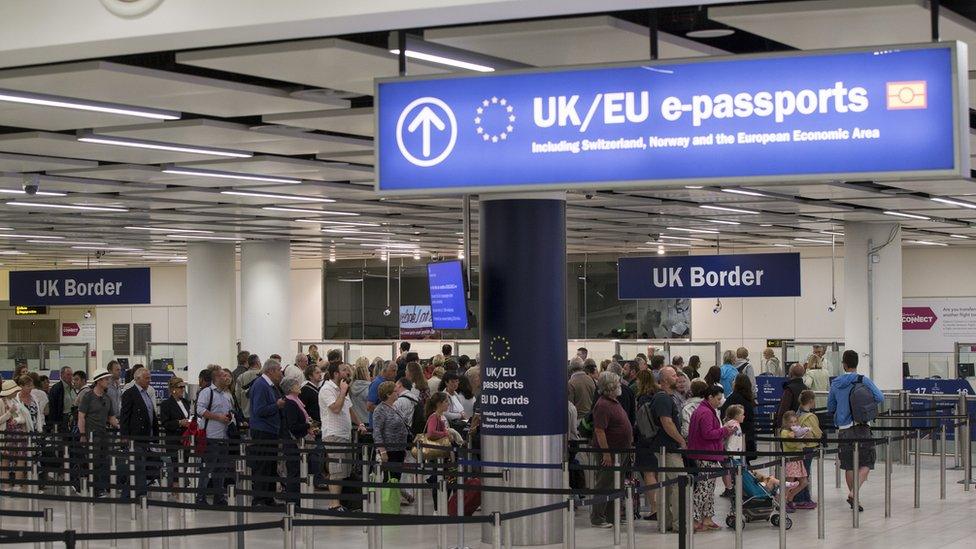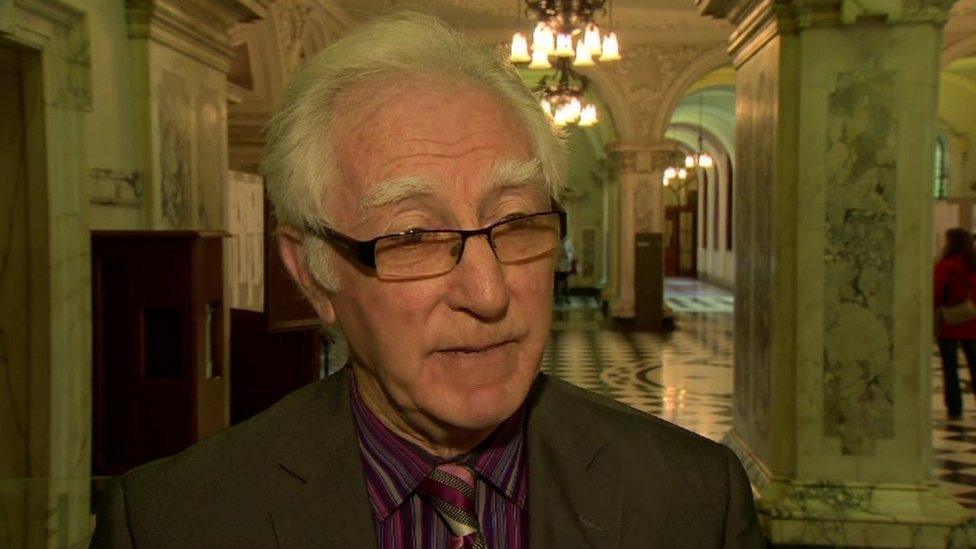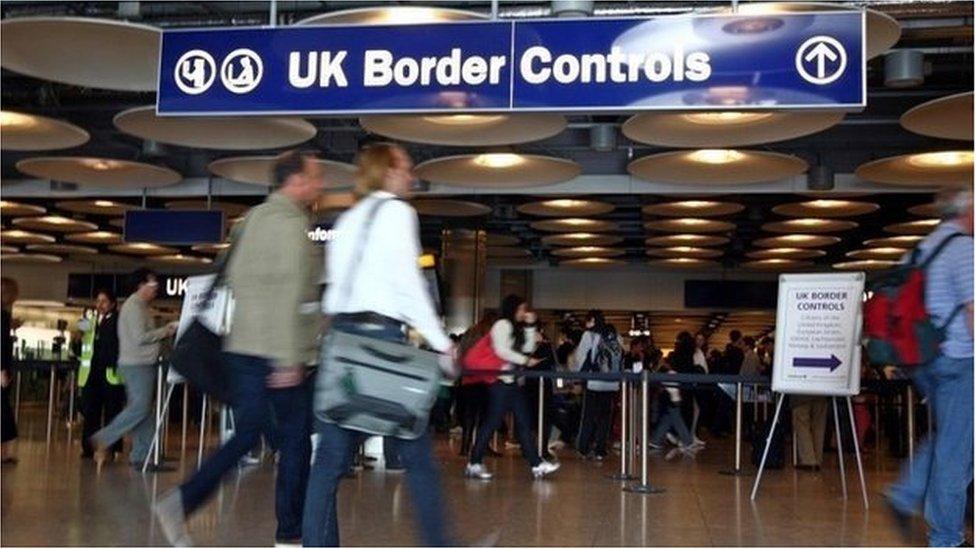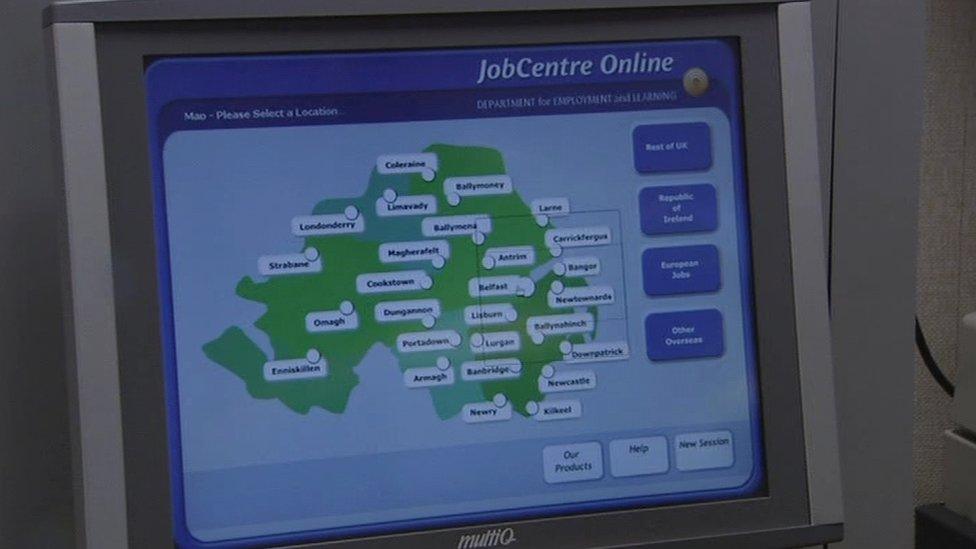NI sees 26% drop in EU workers since Brexit vote
- Published
- comments

Business leaders expressed concerns that firms are finding it increasingly difficult to recruit
The number of EU nationals from outside the UK employed in Northern Ireland has fallen by more than a quarter (26%) since the Brexit referendum.
The figure fell from 54,000 workers at the end of June 2016 to 40,000 by the end of March 2018, according to the Department for the Economy's estimates.
The latest data was obtained by the investigative website, The Detail, external.
It has spoken to business leaders who claimed "uncertainty" over Brexit was contributing to recruitment problems.
They also said the fall in the value of Sterling meant Northern Ireland was now less attractive to migrant workers.
"These are very concerning numbers and reflect what we're hearing from business," Manufacturing NI's chief executive, Stephen Kelly, told The Detail.
"Workers are leaving, not returning and firms are finding it increasingly difficult to recruit replacements."
'Not surprised'
Over the past year, sectors of the economy have highlighted problems in recruiting staff - including the health and social care sector and the hospitality industry, where there is a shortage of chefs.
"Every single week I'm talking to the industry, it's the same message 'we can't get the workers," David Simpson told the Environment Food and Rural Affairs Committee.
Of the 40,000 EU workers that were employed in Northern Ireland at the end of March, 18,000 (45%) are originally from Poland.
Speaking to The Detail, the Honorary Consul of Poland in Northern Ireland, Jerome Mullen, said he was not surprised that official figures had shown a drop in EU workers.
He said Polish migrants were now seeking higher wages in countries like Norway.
"I regularly receive requests from businesses to help source workers from Poland but I've not been able to access workers, even on good wage terms. In all cases I have come up dry", Mr Mullen told the website.

Jerome Mullen said Polish migrants are seeking higher wages outside the UK
The latest data is based on the Labour Force Survey which is produced on a quarterly basis by the Department of the Economy.
The figures do not include EU nationals from the Republic of Ireland who work in Northern Ireland.
A spokesman for the Department for the Economy said it was important to note that the Labour Force Survey data "can be somewhat volatile as it is based upon a sample of households, while there is also potential for some seasonality when comparing quarterly data".
The 40,000 EU workers counted between January and March 2018 did not show much change on the previous quarter, when there were an estimated 39,000 employed from October to December 2017.
However, the quarterly figure has fluctuated since the Brexit vote in June 2016, and was in excess of 50,000 on several occasions.
Population growth
Separately on Thursday, the latest population statistics showed that the number of people living in Northern Ireland rose by 8,700 in the calendar year immediately after the Brexit vote.
The rise was mainly due to "natural growth," according to the Northern Ireland Statistics and Research Agency (Nisra) which recorded 7,700 more births than deaths between 30 June 2016 and 30 June 2017.
Nisra also recorded a "net inward migration" figure of 1,200 people.
Its statistics show that just over 22,000 people arrived to live in Northern Ireland over that 12-month period, while 20,900 people left our shores to live elsewhere.
Both figures represent a drop on the previous year - with the immigration level falling by 7.3% while emigration fell by 6.5%.
There was also a slight increase (1.8%) in the number of Northern Ireland residents aged 65 and over, continuing a long-running trend of an ageing population.
By the end of June 2017, there were 303,000 over-65s, who make up just over 16% of the population as a whole.
- Published19 March 2018

- Published15 May 2018

- Published28 November 2017
